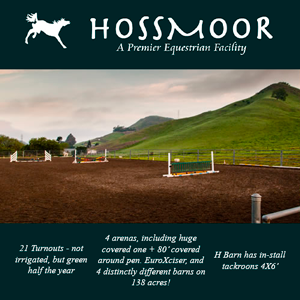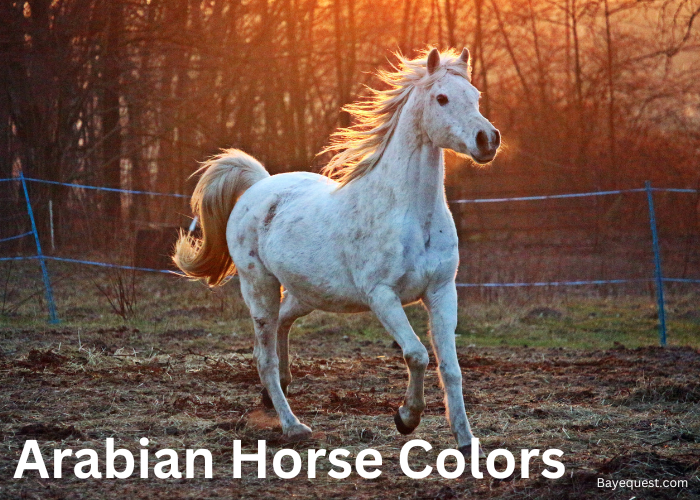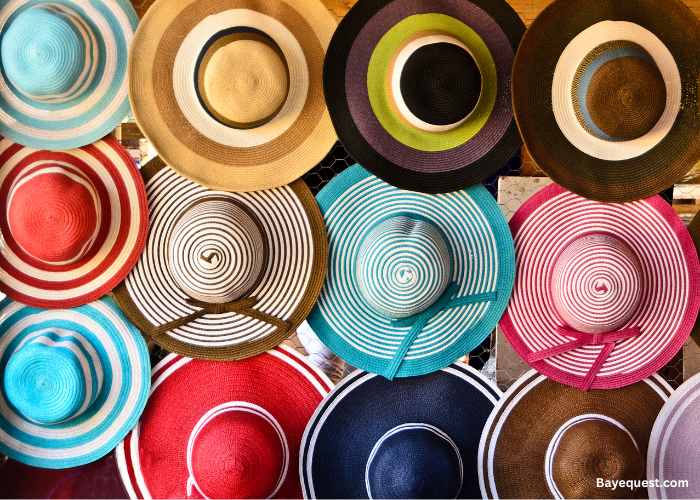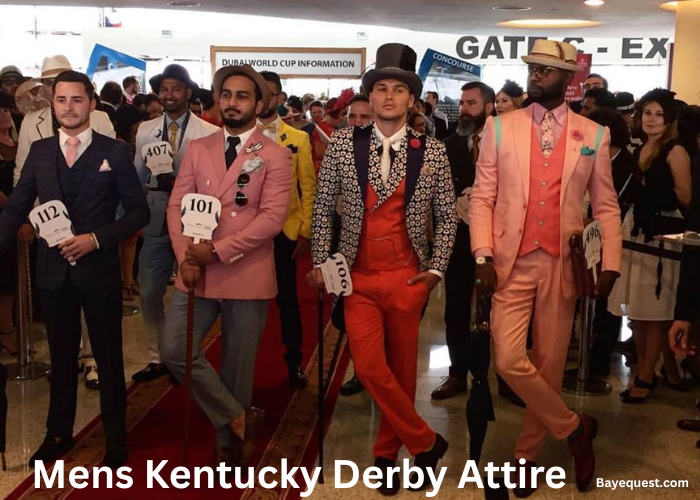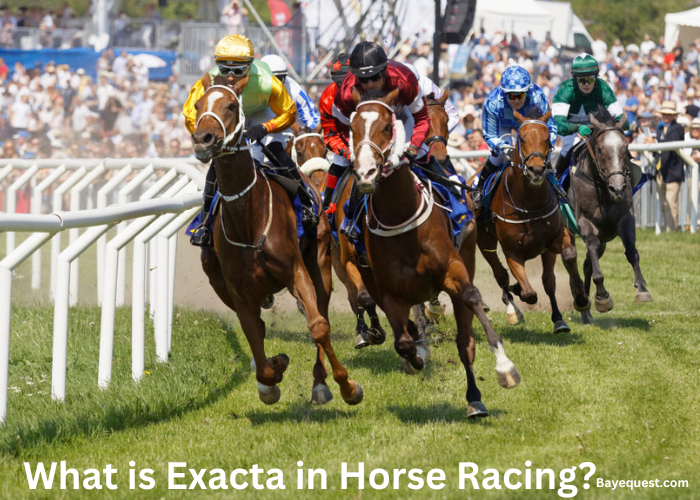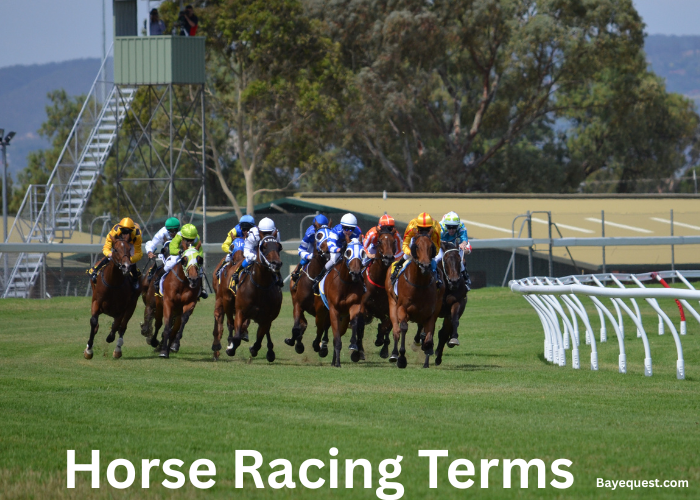Arabians horses don’t just walk, they glide like living art. Bold eyes, arched necks, and tails held high, they know they’re showstoppers.
But their colors? That’s where the magic deepens. Silver dust, blazing copper, and deep mahogany with a mirror shine; these coats shimmer and command attention.
Each coat tells a story of desert winds, royal blood, and untamed fire. They don’t come in every color, but what they do come in is stunning, unforgettable, and pure drama.
So, which shades steal the spotlight in this ancient breed? Let’s explore the rich, radiant world of Arabian horse colors.
Arabian Horse Colors Genetics
Arabian horses have fewer coat colors than many other breeds. That’s because they don’t carry dilution genes like cream, dun, or champagne.
So you won’t find palomino, buckskin, or grullo Arabians.
Instead, Arabians mainly come in bay, chestnut, grey, and black. These colors are controlled by just a few genes.
The base color gene decides if a horse is black-based or red-based.
- Chestnut horses have two copies of the red gene (ee).
- Black horses have two black genes (EE or Ee) with no modifiers.
- Bay horses have a black base but also carry the agouti gene (A), which restricts black to the mane, tail, and legs.
The grey gene (G) works like a switch. If a horse has even one copy of it, it will eventually turn grey, no matter its base color.
This change can take months or years, which is why many grey Arabians are born dark and lighten with age.
There are also rare white markings and patterns like sabino or rabicano, which add splashes of white but don’t change the base coat color.
| Trait | Genes involved | Effect |
| Chestnut | ee | Both genes are red. No black pigment appears. Coat is reddish. |
| Black | EE or Ee | Black base with no agouti gene. Coat is solid black. |
| Bay | E + A | Black base + agouti gene. Black on mane, tail, legs; reddish body. |
| Grey | G (at least one copy | Dominant gene. Horse lightens with age regardless of base color. |
| Sabino markings | Incomplete dominant (varied) | White face/leg markings, belly spots. Not a full coat color. |
| Rabicano | Polygenic (not fully defined) | White ticking on flanks and tail base. Looks like light roan. |
Most Common Arabian Horse Colors
Arabian horses may not come in every color, but the ones they do have are truly iconic. These classic shades have stood the test of time, rich, elegant, and instantly recognizable.
Let’s take a closer look at the most common colors you’ll find in this legendary breed.
Black
A true black Arabian is rare and highly prized. To be considered truly black, the horse must have a solid black coat with no brown or reddish areas, even in summer.
This requires the horse to carry the black gene (E) without the agouti gene (A), which would otherwise turn the coat bay.
Some black Arabians may look slightly faded in the sun, but they’re still black genetically. Their mane, tail, and body are dark, creating a bold, striking appearance.
It’s a powerful and mysterious color, just like the Arabian itself.
Bay
Bay is one of the most common and classic colors in Arabian horses.
These horses have a rich reddish-brown or mahogany body with black points, meaning the mane, tail, lower legs, and sometimes the tips of the ears are black.
Genetically, a bay Arabian has a black base color (E) combined with the agouti gene (A). The agouti gene pushes the black pigment to specific areas, giving the horse its signature bay pattern.
Bay Arabians can range from light, almost coppery shades to dark, deep bays that look nearly black. No matter the shade, the black accents always stand out.
Chestnut (Sorrel)
Chestnut is one of the oldest and most widespread colors in Arabian horses. These horses have a reddish coat ranging from light copper to deep liver.
What sets them apart is that their mane and tail are usually the same color, or even lighter, than their body.
Genetically, chestnut Arabians carry two copies of the red gene (ee), meaning they can’t produce black pigment at all. That’s why you won’t see black points on a chestnut.
Some chestnuts have flaxen manes and tails, giving them a golden glow that’s hard to miss. Bold, bright, and fiery, this color is full of character.
Grey
Grey is one of the most iconic and eye-catching colors in Arabian horses. But here’s the twist—grey horses aren’t born grey.
They usually start out black, bay, or chestnut and gradually lighten over time.
This transformation is caused by the dominant grey gene (G). If a horse has even one copy, its coat will fade over the years, often turning silvery white.
Some go through stunning stages like dapple grey or flea-bitten grey, where tiny dark spots appear on a white coat.
Because of this slow color change, no two greys look the same. It’s a color that evolves with age, adding elegance and mystery.
Rare and Diluted Color Variations in Arabians
While purebred Arabians don’t carry dilution genes like cream or dun, some still show rare and eye-catching variations.
These aren’t full coat colors but rather unique patterns and markings that make certain horses stand out.
Let’s explore the rare side of Arabian coloring, from subtle ticking to bold white splashes.
White
A truly white Arabian is extremely rare and often misunderstood. Most “white” Arabians are grey horses that have fully lightened over time. Their skin is still dark, which sets them apart from true whites.
However, in very rare cases, a white Arabian is born with a white coat and pink skin.
This is usually the result of a genetic mutation, not a separate color gene passed down over generations.
These horses are sometimes called “dominant whites,” but the trait is unpredictable and uncommon in purebred lines.
True white in Arabians is more mystery than norm, and always turns heads.
Roan
The true roan is a coat with an even mix of white and colored hairs across the body, which is not found in purebred Arabian horses.
What many mistake for roan is something else: a pattern called rabicano or just heavy ticking.
Arabians that appear roaned usually have white hairs scattered around the flanks, belly, or base of the tail and not evenly across the body like a true roan.
Genetically, Arabians do not carry the classic roan gene seen in breeds like Quarter Horses or Paints.
So while they may look roan at a glance, it’s an illusion, not a true coat colour in the breed.
Read also: Different Roan Colored Horse Breeds.
Rabicano
This is a rare coat pattern in some Arabian horses, often confused with true roan, but it’s not the same.
Instead of an even mix of white and colored hairs all over the body, rabicano shows up as white ticking in specific areas. Mostly found around the flanks, belly, and base of the tail.
It gives the horse a lightly frosted or brushed look, especially from a distance. The tail may even show white rings, sometimes called a “skunk tail.”
This pattern is not caused by the classic roan gene and is believed to be polygenic (influenced by multiple genes).
It’s subtle, beautiful, and adds a touch of uniqueness without changing the horse’s base color.
Brown
In Arabian horses, brown is often confused with bay, but genetically, it’s not recognized as a separate coat color in the breed. Most “brown” Arabians are actually very dark bays, sometimes called seal brown in other breeds.
These horses may appear almost black, especially around the flanks and muzzle, but still have the reddish or mahogany undertones typical of a bay.
They also carry the agouti gene (A), which restricts black pigment to specific areas like the mane, tail, and legs.
So while you might hear the term “brown” used casually, it’s not an official or genetically distinct color in purebred Arabians.
Sabino
Sabino is a white spotting pattern, not a full coat colour, that can appear in some Arabian horses. It’s one of the few flashy markings allowed in purebred Arabians and adds a dramatic flair.
Sabino markings typically include:
- Bold white on the legs (often high socks)
- Wide blazes or facial white that may extend past the eyes
- White on the belly or sides
- Irregular, jagged edges on white patches
Some Sabinos also have roaning or speckled white hairs throughout the coat, giving a frosted look.
Genetically, Sabino is complex and can range from minimal markings to heavy white. In rare cases, it can even create horses that appear almost completely white, without being grey.
Does Coat Color Affect Value or Performance?
When it comes to performance, coat color has no effect. A horse’s speed, stamina, temperament, and athletic ability come from its bloodlines, training, and care, not the shade of its coat.
However, color can influence perceived value. Some buyers may be drawn to rare colors like true black or flashy markings like sabino, which can raise a horse’s market price slightly.
In certain cultures or show rings, colors like grey or bay may be preferred for aesthetic or traditional reasons.
Still, at the end of the day, a good horse is never a bad color, and performance always outweighs looks.
Fun Color Facts About Arabian Horses
Grey Arabians are like reverse chameleons. They start dark and turn lighter with age. Some go from black to silver to nearly white, like they’re aging slowly.
Black Arabians love to mess with your eyes. In winter, they look jet black. In summer? Sun-faded brown. Same horse, different season. No filter needed.
Chestnuts have drama built in. Ever seen a bright red Arabian toss its head in the wind? Instant movie scene. All they need is slow motion and a soundtrack.
Some foals are born looking one color and grow up to be something different. Surprise! That dark baby may end up a glowing silver by age 5.
Arabian horses don’t come in palomino or buckskin. Why? They like to keep things classic. No trendy TikTok filters, just timeless elegance.
Sabino Arabians are rebels. While everyone else is going solid, they show up with splashy socks, bold face blazes, and belly paint like they raided an artist’s studio.
Want to stand out in a crowd? Try owning a rabicano. It looks like someone shook glitter into the horse’s tail and flanks, subtle sparkle, no mess.
According to desert folklore, grey horses were kissed by the moon, which is why they glow in the dark. (Okay, maybe not glow, but it sounds cool.)
How Much do Arabian Horses Cost?
Arabian horses cost between $5,000 and $30,000. That’s the average, but prices can climb much higher. In fact, an Arabian mare named Pepita sold for over $1.4 million in 2015.
So why the big price gap? Several factors affect the cost, including:
- Purebred status
- Registration with the Arabian Horse Association
- Champion bloodlines
- Show training or competition wins
- Being sold by a reputable breeder
- A stallion suitable for stud
- A broodmare used for breeding

Colors of the Arabian Horse: Conclusion
Arabian horses don’t need wild colors to stand out. Their beauty lies in the few shades they wear.
Each color tells a story, shaped by genetics, history, and tradition. Even their rare patterns like sabino and rabicano add just enough flair without losing the breed’s timeless look.
Whether you love them for their power, their grace, or just their stunning coats, one thing’s clear: the Arabian horses turn heads for all the right reasons.
And no matter the color, they’re always unforgettable.


 Click To Subscribe
Click To Subscribe
